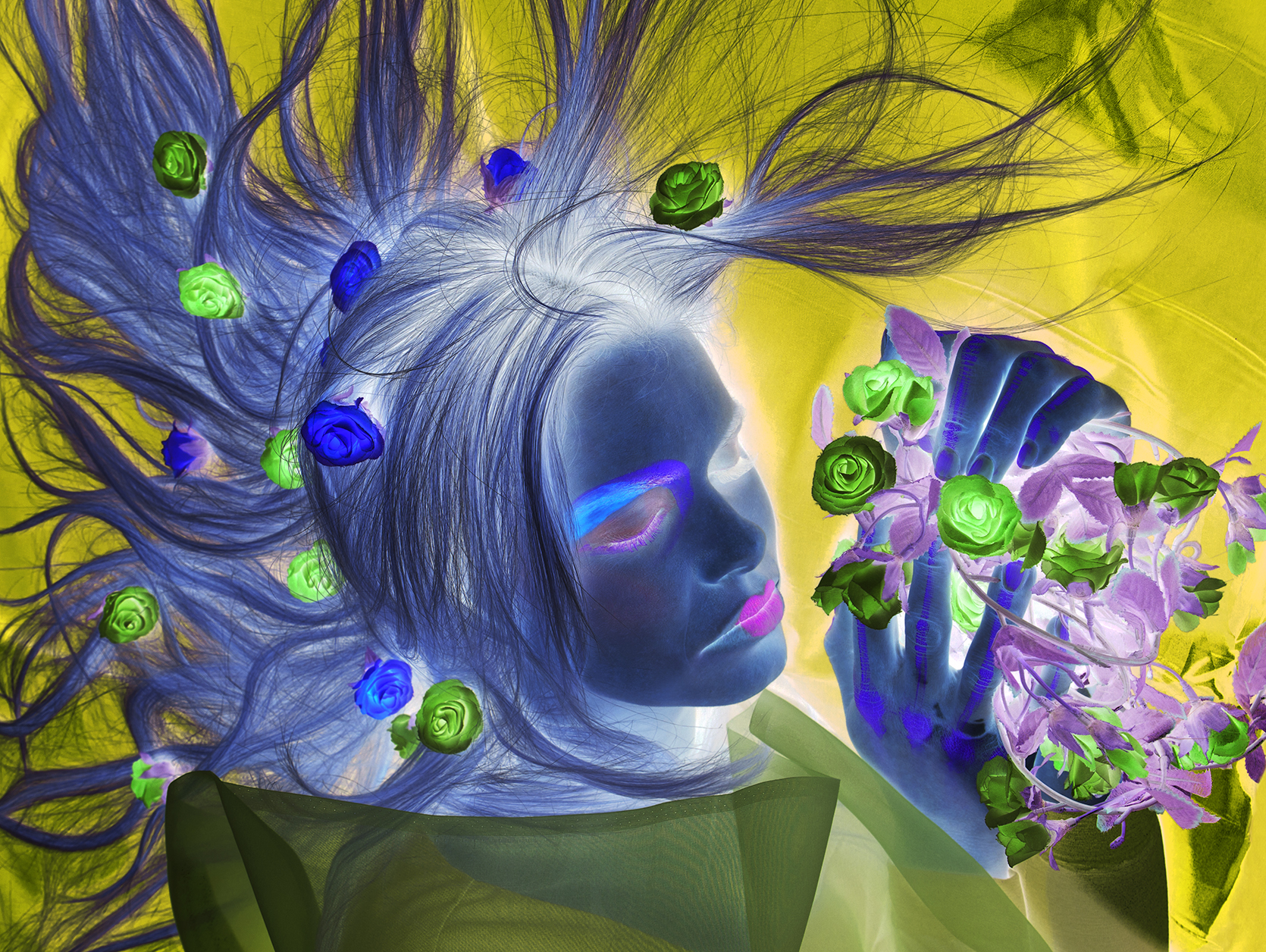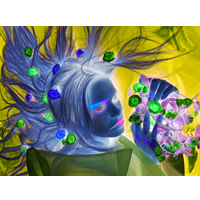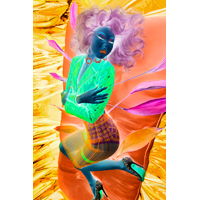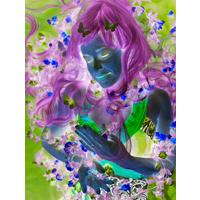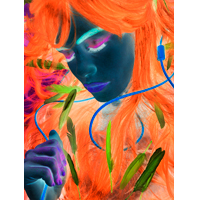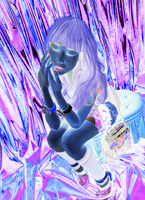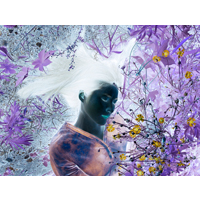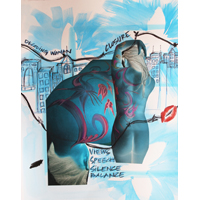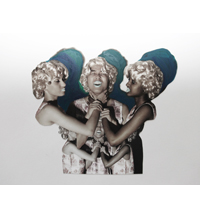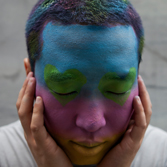
Birth
1978, Seoul
Genre
Photography, Media, Performance
Homepage
Koh Sang Woo: 21st Century Visual Logic
Figurative practices in art are as old as mark-making itself. To make a likeness is to inaugurate a set of relations between a thing--and a thing observed. In so doing, we become aware of a space in between, which we call "difference". To make a likeness of oneself involves special nuance, for the perception of difference is layered with the externalized perception of the thing observed-the "self" one portrays.
To perceive oneself as different suggests being somehow outside of, or momentarily distant from, oneself.
To be/see/be seen in the midst of the world and yet, curiously, to be unattached and lacking affiliation with the normative body and persona that plays host to our identity--that is akin to being here and there, everywhere and nowhere, at once. Put another way, the experience can be decried as being partially subject and object simultaneously.
The invention and initial availability of the camera must have fueled and fanned desire for brief flights into alter/ed-identities- at very least, it revealed almost instantly our mad propensity to enact myriad fantasies for capture by the ever-open, ever-keen lens of the mechanical eye.
Since the advent of the medium, activities such as costume charades that facilitate switching in and out of character indeed, all manner and means of substituting appearance for truth - have been relatively common to the practice of photographic portraiture.
The inherent theatricality of "doubling"-posing, role-playing, pretending, performing, projecting-finds remarkable correspondence in the expressive realm of self-portraiture as the artist is active both behind and before the camera, literally juggling the shifting conditions of subject-and object-hood as a function of being everywhere at once.
Interestingly enough, beginning in the mid 70s (though by no means limited to that moment in time), a majority of the artists who recognized the semiotic potential of collapsing the duality of subject-object structures as a condition of their own identity and experience, were women.
The include, notably, Cindy Sherman and also, among others, Anna Mendieta, Adrian Piper, and Mary Beth Edelson. All experimented by turning their cameras on themselves and by using various props - mirror, make-up, masks, prosthetic devices -to manipulate and, in some instances, to radically alter, their own self-images. In retrospect, we can see each, in her own way, attempting to pry open the space of feminine difference.
In post-Modern practices of the 80s and 90s, artists exploited the transformative or doubling functions of photographic self-portraiture, not only revealing a hyper-awareness of art historical traditions but, also, able to key into the vast arena of contemporary, mass-produced commercial imagery that colonizes our daily visual landscape.
Then as now, for post-Modern artists the alter/ed or surrogate-self-image often representative of multiples, vagrant identities, fragments of which emerge as a series of disguises that viewers, in turn, recognize and de-code has been particularly useful as a device to address and attempt to deconstruct the glut of media stereotypes and personalized marketing strategies that stream our way every day from the vast world of products and services for sale. Much has been written about genres of late 20th century self-portraiture that declare and affirm the absence of a reliable, stabilized, authentic self.
Today our synthetic identities are blatantly sampled from a pool of available stereotypes delivered round-the-clock direct from mass-culture to you. Today, discourses and strategies investigating our intimate identification with forms of mass-representation concern not only the phenomenon of new global markets but the hybridized visual languages and suitably polyvalent identities then spawn.
One may think, for example, of Yasamasa Morimura, Mariko Mori and Nam June Paik as international artists, not only because they exhibit in museums and galleries around the world, but because they deploy the visual motifs of global mass culture.
Do we concern ourselves any longer with the veracity of the self, or have we moved on to become so adept at navigating virtual visual realities that we have begun to imagine no difference-between nature and not, between reality and not, between authentic culture and not - that is, as long as we reside at the upper echelon of the global communication continuum. From a privileged vantage point we savor the fantasies of being "on" all the time, being forever young and limitless, and leaping effortlessly from one cultural frame of reference to another.
What can we expect from a member of the young generation of artists who implements strategies borrowed from the considerably loaded bag of tricks of the aforementioned artists? When Koh Sang Woo turns the lens upon himself his act of self-portraiture is also one of distortion.
His Photographic prints and video works are produced from color negatives, which results in an inversion; dark tones becomes light; red changes to blue, and so on.
Turning figures inside out, revealing in a "negative" rather than a "positive" Key, "Koh" drops out of the picture and there emerges a lusciously blue-toned albino. As he has described, "I use negative images because I am inverting myself. I invert the color of image, and I also invert male and female, as well as Eastern and Western?cultures, I am inverting reality and fantasy too."
Koh alters such "gender effects" as clothing, hair style, make-up, and gesture. as if to compliment the process of self-transformation by emptying his masculinity into feminine form. While titular references - Miss America, Maria, Eve, Virgin Mary - are decided weighted toward the feminine, Koh's "transgender" make-overs reflect both male and female attributes; although, it's quite possible that hermaphroditic aspects might lie undiscovered suppressed in a male dominant culture such as Korea.
The "Emptying out" impluse plays again in Koh's use of symbols and stereotypes fished from the vast pool of the public domain to forge "personal identity loop" that reverberate with the noise of former and future applications. In American culture, for example. "Madonna" and "Eve" are not simply biblical figures they are also very popular, fashion towards American Vocalists.
Through the titles he assigns, Koh's feminine personas are given vague degrees of specificity; and yet, they are more aptly "contained" by the experiences we viewers bring to them - experiences, of course, that derive from the core of the thoroughly mediated and commodified environments the majority of us call home.
The idea of home I have in mind is synonymous with the increasingly pervasive and global communication continuum that teems with continuously transmitted images that have the potential to reach billions of audience members.
Wherever you are in the world, there "it" is-the visual culture of MTV and Coca-Cola and Nike. We get the picture all right and immediately begin to hyperventilate; whether we are talking about agriculture or the kinds of shoes athletes wear, we sense that the crush of mass culture is really not about difference or diversity in any fundamental way but, rather, quite the opposite.
Koh's alter/ed images share as much affinity with the digital technology that supports the global continuum as with all of us who are connected to it-that would be anyone who knows how to use a cell phone, send a fax, turn on cable TV, or get on the internet.
The exponential growth of the continuum, together with it's ever-widening reach and enormous market demand, results in "globally active" images that are continuously taking on, shedding, picking up, and discarding meaning: new old additional deleted reinvented compromised contaminated and more.
Shared visual language and global gestalts : it's a thought-hosed by multi-national conglomerates, organized religion and, potentially, Koh Sang Woo's blissed-out, blue albino, too.
Jan Avgikos(art critic, art historian, contributing editor at Artforum)







